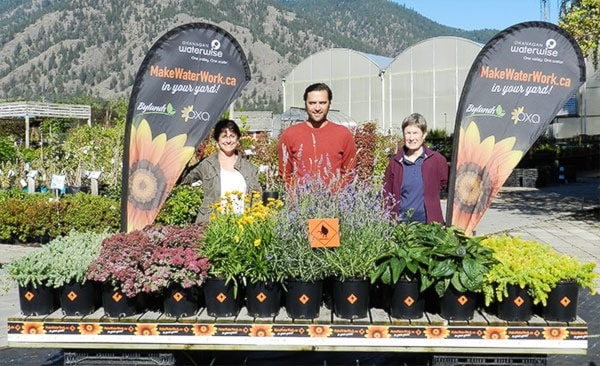Twenty-three years ago, during my first year in horticulture (working in the perennial department of Don Burnett’s family nursery) I was repeatedly asked: “What can I grow in a dry sunny spot that is hard to water?”
Although I had gardened in Kelowna since early childhood, I never had faced this challenge.
Researching in the library, I came across a book titled ‘Taylor’s Guide to Water-Saving Gardening.’
It introduced me to the Seven Principles of Xeriscape, an exceptional, easy guide for gardening successfully.
I was hooked. Almost any style is possible. This method saves time and money. Between 30 and 100 per cent reduction in water use can be achieved.
Xeriscape gardens are resilient in the face of drought and watering restrictions.
Since then, I have been promoting xeriscape since 1992 and began teaching classes in 1999.
From 1995 to 2003, my husband and I operated the first retail nursery to focus on xeriscape plants.
In the large demonstration gardens, we tested the drought-tolerance of many species.
There was little interest in water conservation, but customers loved our healthy, colourful plants.
Awareness began when Kelowna introduced water meters and billed by usage.
In 2009 with the support of grants from the Okanagan Basin Water Board, Lisa Masini and I co-founded the Okanagan Xeriscape Association to provide xeriscape information for the Okanagan.
Created in 2009, the searchable plant database at www.okanaganxeriscape.org is now used by thousands of home gardeners and professionals.
In 2010, when we built the colourful unH2O Xeriscape Demonstration Garden in front of the H2O Aquatic Centre, there was big upsurge in interest and xeriscape class attendance.
This was the result of publicity around the danger of a very low snowpack and low lake levels.
Later, the OBWB’s Supply and Demand Study determined that 24 per cent of all water usage in the valley goes for outdoor residential use. (Study available at www.obwb.ca/wsd/key-findings/water-use.)
This created a target for water-use reduction in residential landscapes.
Recently, there has been a noticeable shift in awareness and increase in beautiful xeriscape landscapes in the region. Increasingly, when I compliment a homeowner on their xeriscape, the response is: “Oh, we didn’t create it, but we bought the house because of the beautiful xeriscaped yard.”
For the past year, the OBWB’s Make Water Work program (www.makewaterwork.ca/) has been collaborating with Byland’s Nursery and OXA to create the Make Water Work Plant Collection.
With its launch this month, xeriscape plants will be more readily available in dedicated displays.
Gwen Steele is executive director of the non-profit Okanagan Xeriscape Association.
